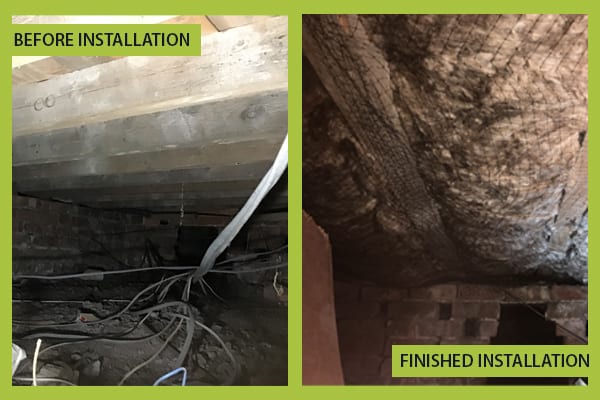
Under Floor Insulation
To identify if you have a checked floor you need to estimate whether there is a void under your floorboards and the floorboards themselves are ceasing over support. This void can cause a lot of heat loss if it’s not addressed so filling this void with floor insulation such as insulation roll or insulation board can minimize home bills and make your home more comfortable too. Suspended floor insulation is the most comfortable fit when there is a vault or basement under the home. This should give an easy way to the void below the support, so insulation can be fixed in place using covering material. insulation slab or insulation board can be resistance fit into the strips so that the insulation stays put whilst insulation netting is rolled out and fixed at each joist just for some extra support.
By pulling the screen showed and guaranteeing the insulation is tightly bound into space you can decrease heat loss through the floor without needing to lift a single floorboard.Unfortunately, if your home doesn’t feature a basement or a cellar, but the floor is still suspended, floorboards and any floor finishings will need to come up. Since it’s a big job to empty a room of furnishings to gain access to the void below, we recommend that this is done alongside other big jobs like plastering or painting.
Like insulating a floor where a basement or cellar provides access to the joists, you need to lift the floorboards and put them to one side before laying rigid insulation boards in the joist spaces. Cut each piece of insulation board to just slightly smaller than the joist space you’re going to fit it into, this will provide friction for a tight fit, so no air can escape through the side gaps.
You can use insulation roll like popular natural insulation sheep’s wool by fitting inexpensive insulation netting underneath the joists as in the picture to the right. Drape the netting as low as needed to accommodate the thickness of the insulation roll then roll the insulation out, as usual, taking care to make sure it extends to the width of the joists.
Please be aware of airbricks in outside walls. Floorboards will rot if airbricks are covered as there will be no ventilation! These should be at least 2 inches below the bottom of the insulation before the hardcore.
